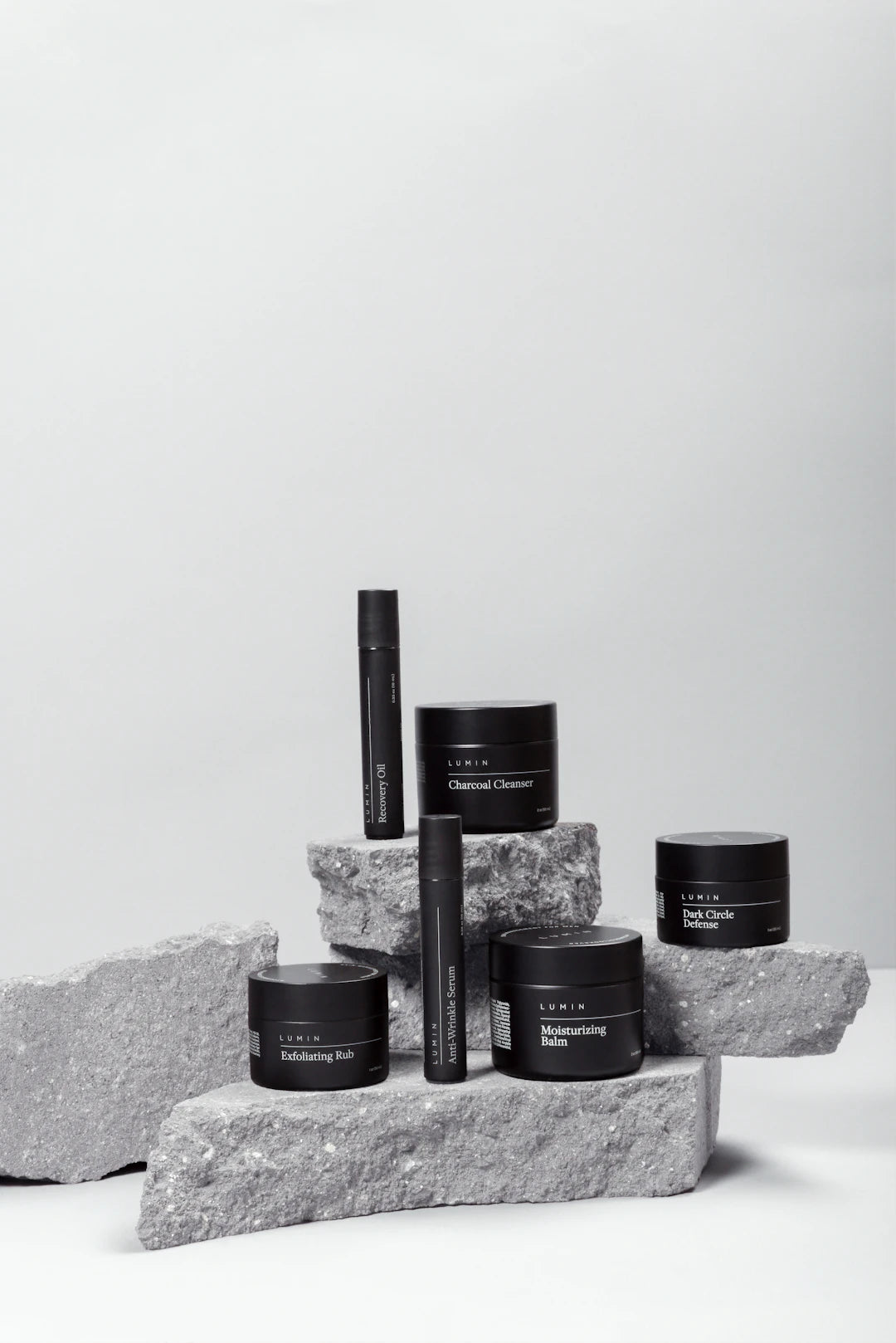Unlocking Skin Care Terms: Your Guide to Glowing Skin

Frequently Asked Questions
1. What are active ingredients in skin care products?
2. What does 'non-comedogenic' mean?
3. How can I determine my skin type?
4. What is the importance of SPF in skin care?
5. How should I build my skin care routine?
When it comes to the world of skin care, the sea of terms, labels, and descriptors can feel overwhelming. With the constant influx of new products, the rapid evolution of trends, and the jargon often used by brands, understanding what goes into your skin care routine is crucial. In this comprehensive guide, we’ll demystify the most common skin care terms and labels. Whether you’re searching for a home chemical peel kit or trying to perfect your skin care routine, this article will ensure you're well-informed and ready to make the best decisions for your skin.
What Makes a Skin Care Product?
At the heart of any skin care product lies a complex formulation designed to provide specific benefits to the skin. Here, we’ll break down some integral components you’ll often see on labels.
Active Ingredients
Active ingredients are the powerhouse components of any skincare product. They are responsible for delivering results tailored to various skin concerns. Common active ingredients include:
- Retinoids: These vitamin A derivatives are renowned for promoting cell turnover and reducing the appearance of fine lines.
- Alpha Hydroxy Acids (AHAs): AHAs, such as glycolic acid, are used in home chemical peel kits to exfoliate the surface of the skin, improving texture and tone.
- Beta Hydroxy Acids (BHAs): Salicylic acid is a well-known BHA, excellent for penetrating pores and treating acne.
- Vitamins: Vitamins C and E contribute to skin health, offering antioxidant protection and skin-brightening benefits.
When choosing products for your skin care routine, always look for items that contain active ingredients geared toward your specific skin issues.
Formulation Types
Skin care products come in various formulations, each designed for unique applications:
- Serums: Lightweight formulations with a high concentration of active ingredients meant to penetrate deeply.
- Creams: Thicker textures that provide hydration and create a protective barrier on the skin.
- Gels: Often water-based, gel formulations can provide hydration without adding excess oil, making them ideal for oily skin types.
- Lotions: These mixtures are typically lighter than creams but can still provide moisture, making them versatile for many skin types.
Understanding Labels and Terms
Deciphering labels can often feel like reading a foreign language. Here are some of the most common terms and their meanings:
Non-Comedogenic
This term indicates that the product is formulated not to clog pores, making it an excellent choice for individuals prone to acne or breakouts. If you're building your skin care routine, opting for non-comedogenic products is often the safest route.
Hypoallergenic
A hypoallergenic label means that the product is less likely to cause an allergic reaction. However, this is not a guarantee, so it’s always wise to patch-test new products, especially if you have sensitive skin.
Fragrance-Free vs. Unscented
These two terms can be misleading. "Fragrance-free" means that no fragrances have been added, while "unscented" indicates that a product may still contain ingredients that mask odors. For those with sensitive skin or allergies, fragrance-free is usually the preferred choice.
Water-Based vs. Oil-Based
Products are generally categorized as water-based or oil-based. Water-based formulations are lightweight and typically hydrate without leaving a greasy residue. In contrast, oil-based products can provide a more intense hydration level but may not suit those with oily skin.
SPF Labels
Understanding sun protection factor (SPF) is essential. An SPF number indicates how much UVB protection a product offers. For example, SPF 30 protects against about 97% of UVB rays. Be sure to look for "Broad Spectrum" labels, as these formulations protect against both UVA and UVB rays.
Popular Skin Care Ingredients Explained
Familiarizing yourself with some of the buzzwords in skincare formulation can help you decipher what to include in your skin care routine:
Hyaluronic Acid
This powerhouse ingredient can hold up to 1,000 times its weight in water, making it a favorite for hydration. It's especially beneficial in serums aimed at plumping and hydrating the skin.
Peptides
These amino acid chains are crucial for building proteins in the skin. Peptides can help stimulate collagen production, aiding in the reduction of fine lines and promoting firmness.
Niacinamide
Also known as Vitamin B3, niacinamide is a multitasking ingredient that can help control oil, reduce redness, and improve skin texture—all great benefits for a balanced skin care routine.
Antioxidants
Antioxidants protect against oxidative stress caused by free radicals. Some common antioxidants include Vitamin C, Vitamin E, and green tea extract.
Decoding Your Skin Type
Before building your skin care routine, it’s essential to understand your skin type. Knowing whether you have oily, dry, combination, or sensitive skin will guide you in selecting the right products to meet your needs.
Oily Skin
Individuals with oily skin experience excess sebum production, which can lead to breakouts. Look for oil-free or matte-finish products, and consider incorporating an AHA or BHA product to control oil and prevent clogged pores.
Dry Skin
Dry skin can be flaky and tight. Creams and moisturizer-rich products that include hyaluronic acid and ceramides are great for sealing in moisture.
Combination Skin
Combination skin features both oily and dry areas, so a balanced approach is necessary. You may want to use lighter products on the oily areas and richer textures on the dry spots.
Sensitive Skin
Sensitive skin may react easily to formulations. Always opt for gentle, fragrance-free products and avoid harsh exfoliants to keep irritation at bay.
Building Your Ultimate Skin Care Routine
Now that you understand the terms and labels, it’s time to start building your personalized skin care routine. Here’s a breakdown of a typical regimen that you can adjust based on your skin type and needs:
Step 1: Cleansing
Start and end your day with a gentle cleanser suited to your skin type. Cleansing removes dirt, oil, and impurities, allowing your skin to benefit fully from subsequent products.
Step 2: Exfoliation
Depending on your skin type, exfoliation can be key. Chemical exfoliants, such as AHAs and BHAs, can provide a gentle yet effective way to slough away dead skin cells. For those interested in at-home treatments, a home chemical peel kit can also add significant value.
Step 3: Serum
Serums are concentrated treatments that address specific skin concerns, whether it’s hydration, anti-aging, or pigmentation. Choose serums based on your needs.
Step 4: Moisturizer
No matter your skin type, don’t skip this step! A suitable moisturizer hydrates the skin and seals in moisture from the previous products.
Step 5: Sun Protection
The final step in your morning routine should always include sun protection. Invest in a broad-spectrum SPF of at least 30 to protect your skin against harmful UV rays.
Ready to Transform Your Skin?
Understanding skin care terms and labels can seem like a daunting task, but once you grasp the basics, navigating the world of skin care will become easier. By equipping yourself with knowledge about ingredients, formulations, and techniques, you'll be well on your journey to a successful skin care routine. Remember to opt for products that meet your specific needs and don't be afraid to consult with professionals when necessary. Your skin deserves the best, and with the right information, you can achieve a radiant complexion!


